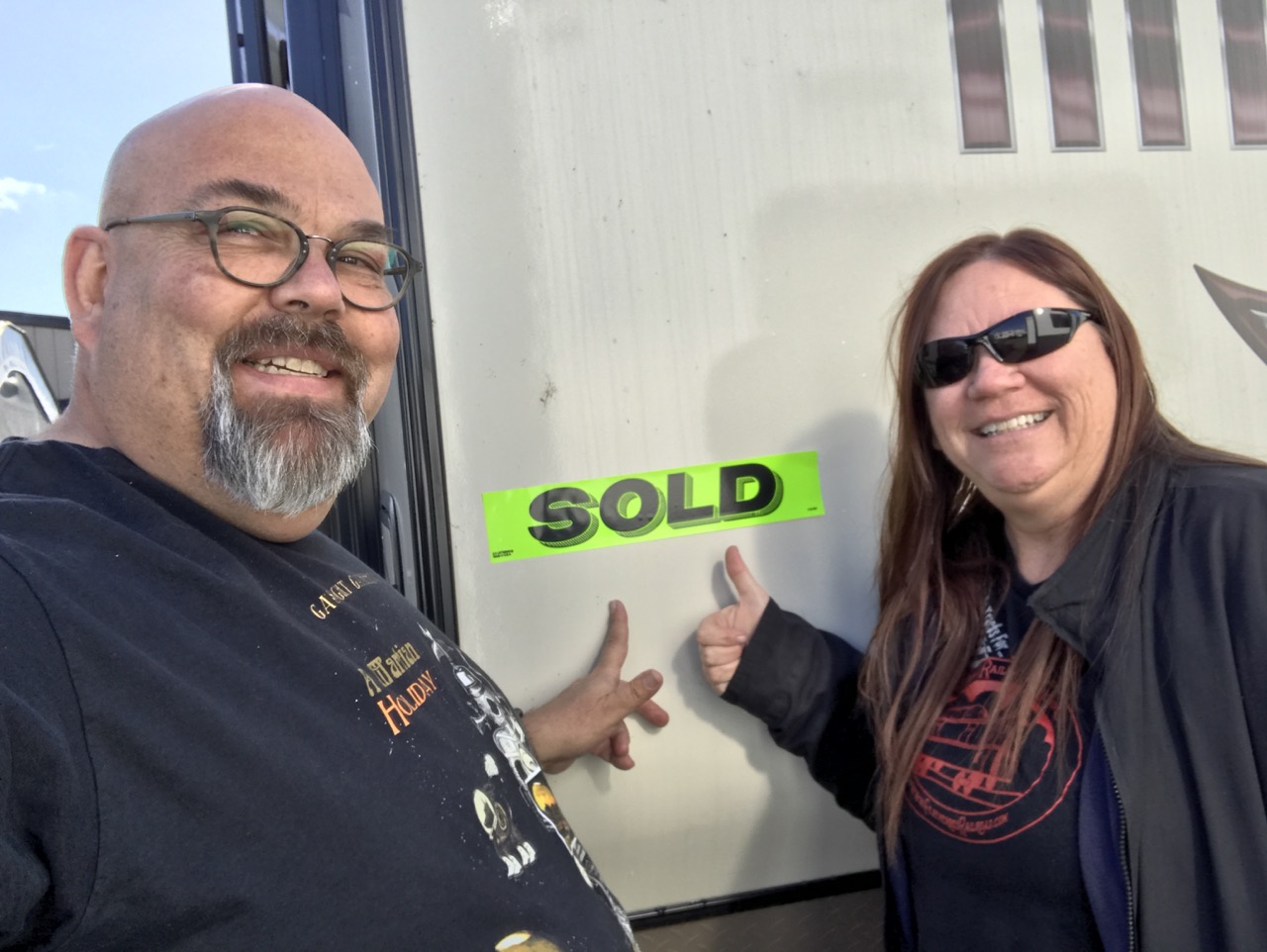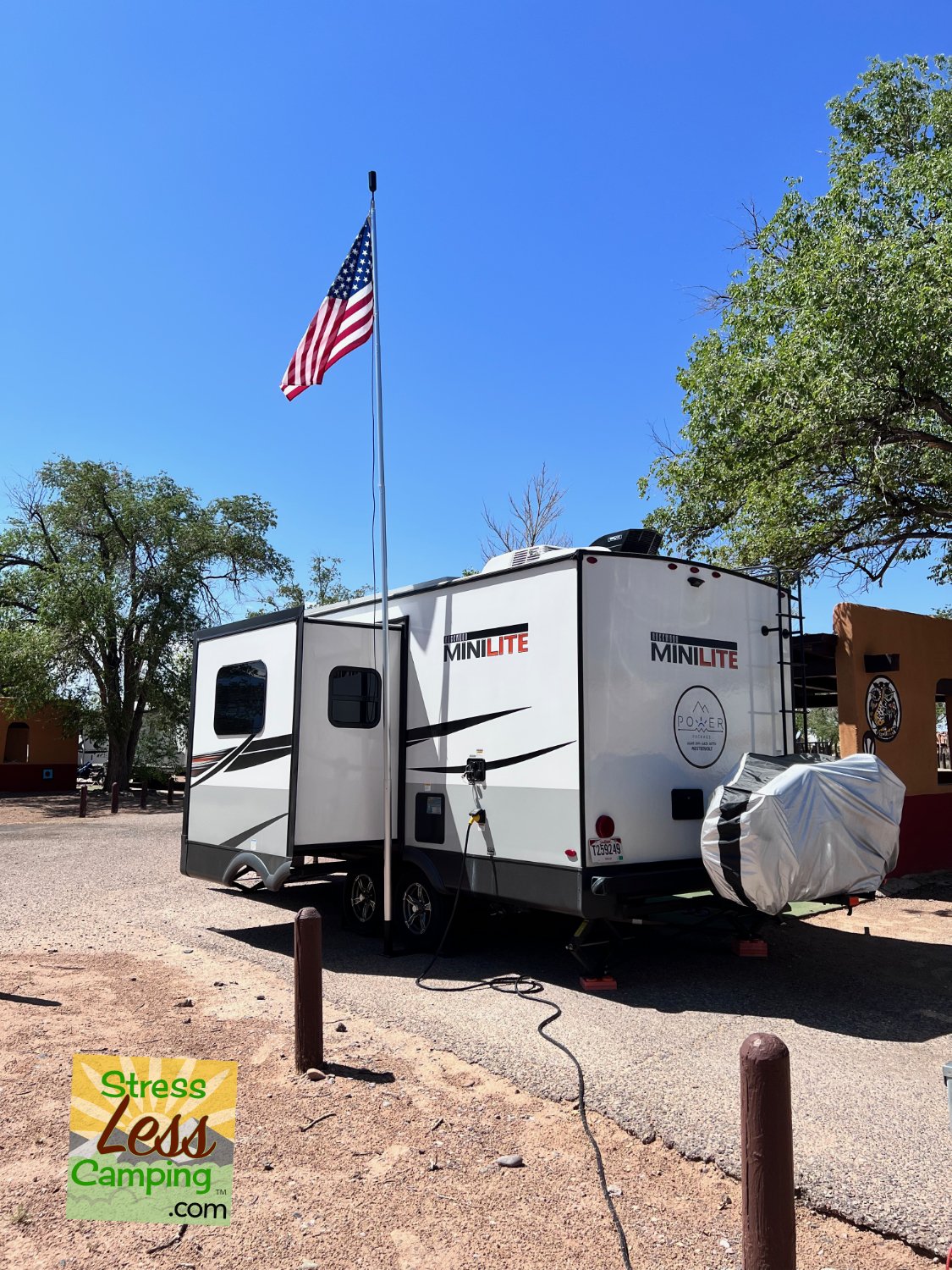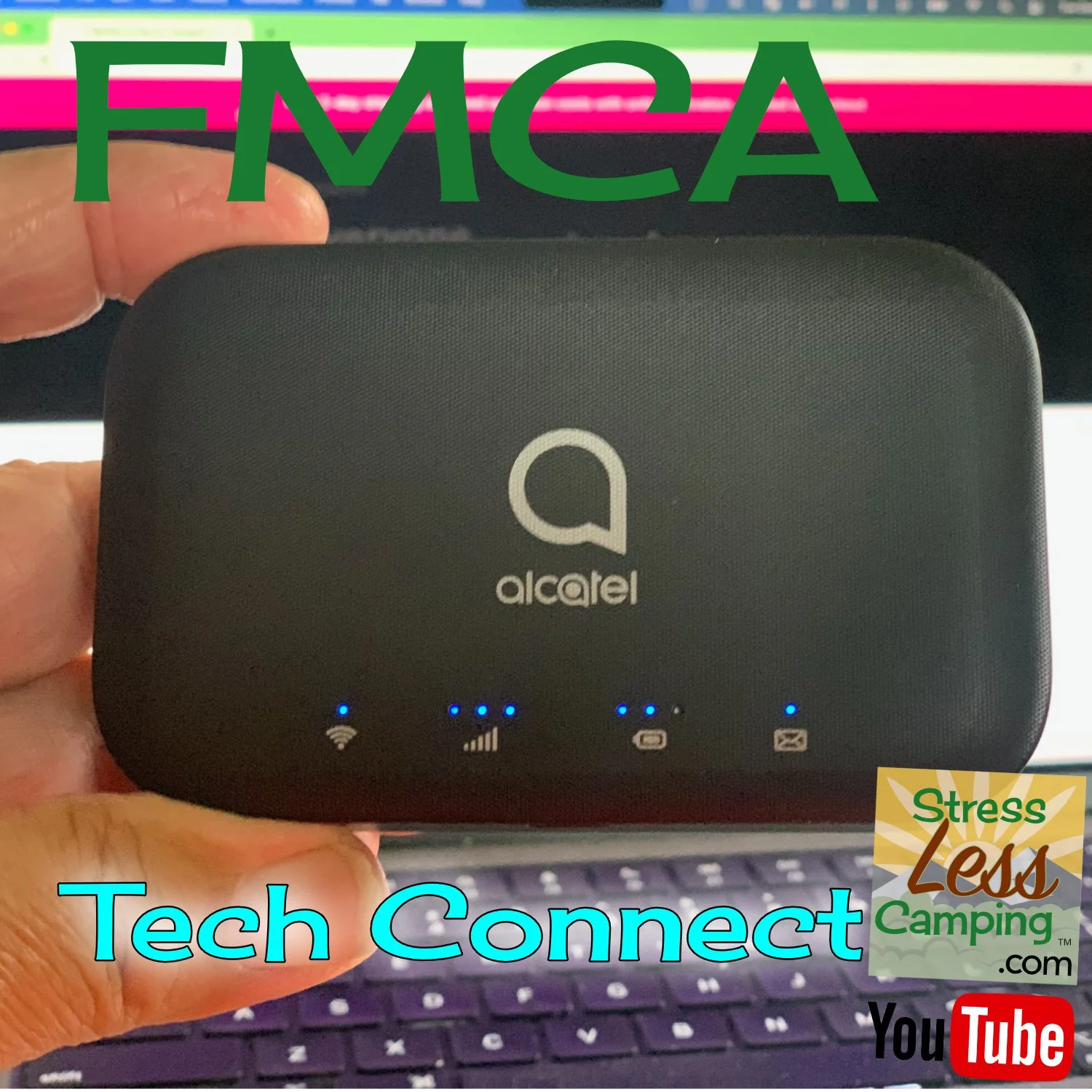How we stay connected in our RV on the road
What’s the best Internet for RVers and travelers?
How do you get Internet on the road? There are so many ways to do it and you can spend as much money as you’d like getting connected. But there are also more affordable ways to get connected depending on your needs. Here is a relatively straightforward plan that has worked well enough for us while also remaining relatively inexpensive.
With so many people working from the road nowadays there are no end to the number of ways you can find a connection.
As with almost any critical system, redundancy is a key element in experiencing success on the road. The greater the number of options you have the more likely it is that one of those choices actually performs to your expectations.
Your cell phone unlimited plan isn’t
One of the things it’s important to understand is how cell phone plans work. Essentially many cell phone plans are sold as “unlimited” but really that’s not completely true. While you do maintain connectivity for an entire month’s term, that doesn’t mean it’s usable connectivity.
Most cell phone plans will limit the amount of high-speed data you get within a month. After a specified amount of use they have the option to reduce the performance of your phone through the remainder of the term.
There are also plans that say “data speed may be limited in high traffic areas.” Essentially every cell tower out there has a capacity just as any piece of connectivity has. If that tower is experiencing significant (by the cell company’s definition) traffic they may reduce the speed on many of the people using the tower to maintain performance for some, including some with better phone plans.
Unfortunately there’s no way to know if this is going to be you and the amount of performance you may lose could depend directly on how important it is that you be connected. In other words, if it’s a critical Zoom call the likelihood that you’re going to be throttled is pretty high.
You can also almost guarantee that in high-traffic areas like Quartzsite during the Sports, Vacation and RV Show or Albuquerque during Balloon Fiesta the towers are often so overtaxed that almost everybody’s getting throttled.
Interestingly cell companies can bring in reinforcements during big events in the form of temporary portable cell towers but just because that technology exists doesn’t mean they will or that they even have enough reserves on hand to accommodate the demand.
For example, in years that we’ve been to Quartzsite where there are no natural disasters elsewhere in the country, I notice a lot of temporary cell towers but if there’s a big event happening in another part of the country that wipes-out the permanent towers, that’s where the cell providers are going to be taking their temporary reinforcements.
Multiple Choice
What works very well for us is to have a device on each of the three major carriers in the US. So in our situation, Peggy has a cell phone on AT&T with an “unlimited” plan. What this really translates into is that she has 50GB of data on her phone and then 15GB of data on a tethered device, like a computer.
Honestly we can blow through 15GB of data in no time.
Verizon cell plan
My current Verizon plan is now unlimited and, thus far, it has proven to be just that. Checking on my usage I have often consumed several gigabytes of data with no experienced slow down.
However Verizon does still hold the right to slow my data speeds and I’m sure that is exactly what will happen when I get into a highly congested area like Quartzsite during the Sports, Vacation and RV Show or at the Albuquerque Balloon Fiesta. I tend to avoid big crowds but these two events are highlights in our year.
For those who were around during dial-up internet days you have some idea of what 600Kbps is like. Yes, yes, I know it was slower than that but with today’s high-content websites and such it feels the same.
TMobile surprise
What really surprised me was when friend Jason Epperson from RVMiles recommended a TMobile hot spot. I was honestly biased against TMobile and Sprint only because of their reportedly small network. But their smaller network means fewer people are using them so I went ahead and got a hot spot with them and that has been a game changer.
At $50/month the TMobile Hot Spot gives me 100GB of data which might seem like a lot, but I can blow through that in a few weeks as well depending on what I’m doing. But there are ways around this.
What surprised me is just how good the coverage of TMobile actually has turned out to be. If you haven’t heard, TMobile and Sprint have merged and are working toward significantly upgrading the combined network. While I’ve only had the hot spot in the west thus far, I have been quite surprised at how well it’s worked and how extensive the coverage has been.
In fact, there have been times with both our AT&T and Verizon phones have had no signal and we’re at full signal with the TMobile hot spot. As Jason told me, there aren’t many people on the TMobile network so the likelihood of being throttled is lower.
I also recently upgraded my TMobile router to an Inseego MiFi unit which takes advantage of higher data speeds from TMobile but also enabled me to get 100GB of data in a month at the same price as I was paying for half that just a short while ago.
Cell phone booster
One of the things that has absolutely helped us also is our cell phone booster. We happen to have a WeBoost Drive 4GX and have for a number of years now.
What a cell booster does is uses a more powerful antenna system to seek out a moderate signal and then amplify that. This will only work where you can actually get some signal but we’ve been able to use our cell booster and TMobile hot spot to get some pretty acceptable Internet coverage in places where there was not much.
In one particular example the hot spot went from two bars of coverage to five which really surprised me and changed the performance from barely adequate to absolutely terrific.
I just improved the performance of the WeBoost Drive 4GX by mounting the antenna on the top of a Camco portable flag pole.
How do you know your signal’s strength?
Smartphones come with a field test mode. While we are used to seeing the bars on the phone to represent signal strength, smartphones can be placed into field test mode to show the actual decibel reading. iPhones and Android phones access this differently and if you’re nerdy enough, as I am, it’s easy to find how to determine this.
On two recent outings I measured the results of the weBoost to see what was actually happening.
On the coast when the weBoost was turned off I was getting -135 dBm, which means I wasn’t able to use the phone for anything more than holding the door open. With the weBoost turned on the signal went to -115 dBm, which wasn’t great but made it so I could at least make a lousy phone call.
However, the fact that the boosted signal was so meager explained why the campground had two working pay phones on the property.
While camping in the Redwoods recently I did a similar test and the cell signal went from -105 dBm to -80 dBm, which is a significant change and made a vast difference in my phone’s usability.
Tricks and Tips - save money
There are a few ways we’ve also extended our coverage, sort of.
With the hot spot, TMobile also sells a “pay as you go” SIMM card where you can buy a specific amount of coverage (our hot spot only supports up to 50GB plans, there are more advanced models that will take up to 100GB plans). When I have blown through all 50GB of data on my hot spot I can go and buy another 50GB SIMM from TMobile, for another $50, and replace the SIMM in my hot spot. This gives me additional data until my monthly plan renews.
If I’m doing research in the form of watching YouTube videos AT&T lets me watch all the videos I want without deducting that from my cell plan usage. As such I watch the videos on either my phone or on Peggy’s. Further I can reduce the quality of the videos so that they don’t consume as much data.
There are often days where we might want to start that day with a coffee from a coffee place and most coffee places have free WiFi. This is where we can download maps and other things so that we’re not using the data in our cell plans.
This is also where we’d go when we want to upload a podcast or a YouTube video, frankly. I don’t even bother trying to do so over cell data any longer.
Other Services
One of the things we’ve long advocated is the FMCA’s Tech Connect service. As an FMCA member you can access that organizations services including Tech Connect. Tech Connect is actually unlimited mobile internet connectivity. Until recently the service used the Sprint network but with the merger with TMobile it now uses that company’s service, the same as the hot spot that I’m using.
In fact, for the same $50/month ($49.99 to be precise) you get actual, unlimited coverage with the device. So, obviously, we switched to this however we’re still waiting on the device to arrive in our PO Box so we can fully test it. Expect a full review toward the end of January or beginning of February after we’ve taken it to Quartzsite to abuse it there.
“Unlimited” internet services
Every year we go to trade shows and see companies who promise unlimited coverage. When we go back the following year, they’re often no longer in business. If someone promises something that seems unusually good, it’s often pie in the sky.
Companies that resell cellular internet coverage often have a promise from whatever cell phone provider they’ve partnered with that usually comes to a grinding halt once that company realizes how much data RVers can use. I’m sure there must be some company out there that does provide unlimited data, but I haven’t found one yet that has been able to remain in business for very long.
Secret data usage
You might be surprised by some of the things that are using data that you’re not even aware of. For example, if you’re taking photos with your phone that photo library may be continuously updated on the Internet.
If you have a cloud data plan like iCloud or Google Drive that, too, is constantly updating data.
There are a lot of little things that continually update and archive and check that are associated with our smart phones. Your cell phone plan may just take this in stride, but it may not. If you take a lot of photos as we do, archiving those continuously actually consumes a fair amount of data.
Park Wifi
For those who believe that RV park WiFi is part of the mix, you haven’t spent much time in many RV parks. While almost every RV park nowadays claims that you they have WiFi, that WiFI is so bad you might as well not bother.
Your Security
Further, unless you have a router or other way to protect your data using park WiFi also exposes you to a potential for being hacked. In fact it happened to me at a KOA in Palm Springs where I was dumb enough to make a purchase using the park’s WiFi and got my credit card hacked.
Essentially using data over a shared network like WiFi means nefarious characters can watch all the information being transmitted and and pick up on things like passwords and credit card numbers. It’s not the park’s fault that someone did this, and I actually thought I was still on my own secured network.
Oh yeah. If at all possible see if you can get a real credit card (not a debit card) that has a card number that changes with each transaction. There are virtual credit cards out there from a number of sources that change the card number with each transaction. That way even if a bad operator does get the number you just used it won’t be worth anything to them.
Why a real credit card? With a real credit card there are further protections in place in the event of a fraud. Furthermore, the money that’s stolen is essentially the bank’s money so they’re in a bigger hurry to fix the issue. If you have a debit card with the money you rely on to survive and that account is hacked you may get the money back in short order, but you may not. Is this an acceptable risk to you?
Internet Connectivity
If you want true in-depth coverage of Internet Connectivity on the road the best resource for this is the Mobile Internet Resource Center. Chris and Cherie do an outstanding job covering this subject including all the latest updates and changes. While I’ve described what works for us and has worked relatively well, these are certainly not the only options out there and the options and possibilities are seemingly limitless.
What’s your solution for staying connected on the road? When you get a great connection, let us know.










